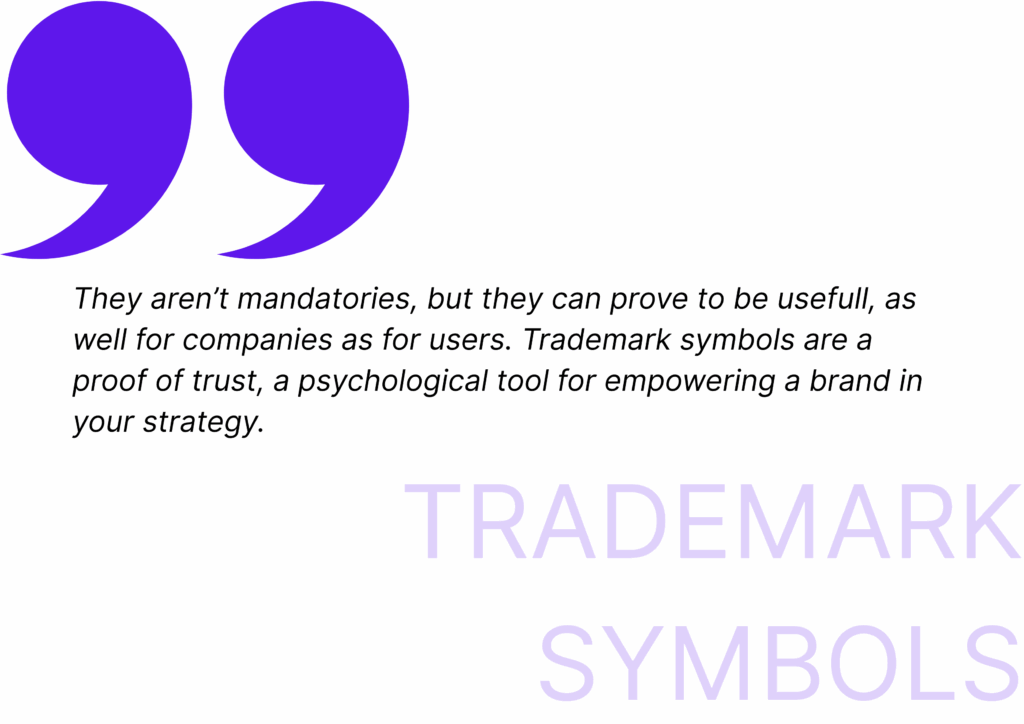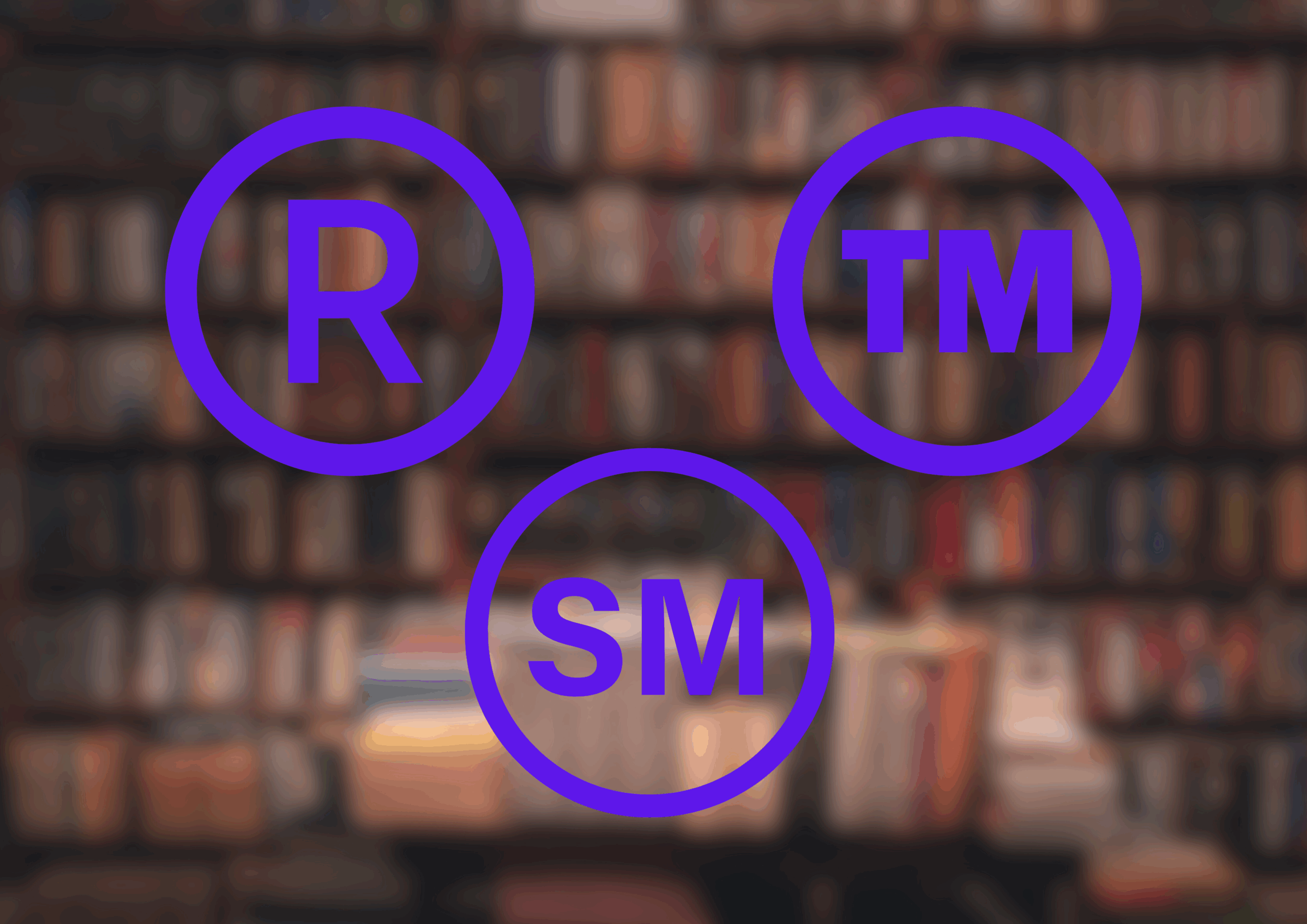What is a Trademark symbol?
At its simplest, a Trademark symbol is a typographical mark placed next to a word, phrase, logo, or other brand identifier to indicate that the owner considers it a trademark. A trademark itself is any sign that distinguishes the goods or services of one enterprise from those of others. Trademarks can take the form of:
- A brand name (e.g., Nike)
- A slogan (e.g., Just Do It)
- A logo (e.g., the Swoosh)
- Even sounds, colors, or product packaging (think of the MGM lion’s roar or Tiffany’s blue box)
The Trademark symbol communicates to the public that the owner claims proprietary rights over that sign. Importantly, using the symbol does not by itself create legal rights — but it strengthens the owner’s position and makes those rights more visible.
There are three common trademark symbols in use today:
- ™ (Trademark symbol) – Indicates an unregistered trademark.
- ® (Registered Trademark symbol) – Indicates a registered trademark, officially recognized by a government authority.
- ℠ (Service Mark symbol) – A less common variation, used primarily in the United States for services rather than goods.
Origins of the Trademark concept
The idea of a Trademark symbol has its roots in the long history of branding. Humans have used signs, marks, and signatures for thousands of years to signify ownership and authenticity.
- Ancient Times: Archaeological evidence shows that potters in ancient Greece and China often stamped their wares with unique symbols to indicate their workshop. Roman brickmakers did the same.
- Medieval Europe: Guilds required craftsmen to mark their goods with identifiable emblems to ensure accountability and quality. Bakers, for example, stamped bread with distinctive marks.
- Early Modern Period: By the 16th and 17th centuries, legal systems in Europe began to recognize the economic value of these marks and created early forms of trademark protection.
The Trademark symbol as we know it today — ™ and ® — emerged much later, in the 19th and 20th centuries, as intellectual property laws were codified and internationalized.
The invention of the Trademark symbol
The Trademark symbol itself is relatively modern. The ™ mark began appearing in the United States and the United Kingdom in the late 19th century, as companies sought to clearly identify their proprietary marks even before official registration systems were widely available.
- ™ (Trademark symbol): First used informally by companies to signal that a brand was being claimed as a trademark.
- ® (Registered Trademark symbol): Introduced after trademark registration systems became established. In the United States, the Lanham Act of 1946 codified the use of ® to indicate federal registration with the U.S. Patent and Trademark Office (USPTO).
- ℠ (Service Mark symbol): Also developed under U.S. law to distinguish services (like consulting, insurance, or entertainment) from goods.
Thus, the invention of the Trademark symbol was not the result of a single act, but rather the natural evolution of branding practices combined with the rise of formal intellectual property law.
Meanings of the different Trademark symbols
If you are paying attention, you already found these symbols on the web, on papers or on products. Tho, they are quite different, each one bringing a different use case and signification. Then, to fully understand what it’s about, let’s dive deeper into the Trademark symbol world.
™ (Trademark Symbol)
The ™ symbol is used to indicate that a word, phrase, or logo is being claimed as a trademark, regardless of whether it has been formally registered.
- Legal status: It does not require government approval.
- Purpose: Puts the public on notice that the owner considers the mark proprietary.
- Scope: Used worldwide, though the specifics of recognition differ by jurisdiction.
Example: A startup may launch a new brand called FreshLeaf™ for organic salads, even before applying for formal registration.
® (Registered Trademark Symbol)
The ® symbol is far more powerful. It may only be used once a trademark has been officially registered with the relevant government agency (such as the USPTO in the U.S. or EUIPO in the European Union).
- Legal status: Reserved exclusively for registered marks. Using it without authorization can result in penalties.
- Purpose: Signals that the mark enjoys the full protections of trademark law, including the ability to sue for infringement.
- Scope: Recognized internationally under agreements like the Paris Convention and Madrid Protocol.
Example: Coca-Cola® is a registered trademark of The Coca-Cola Company.
℠ (Service Mark Symbol)
The ℠ symbol is a niche version of the Trademark symbol, used in the United States to designate unregistered service marks.
- Legal status: Similar to ™, but specifically for services.
- Purpose: Differentiates between goods and services in the American legal framework.
- Current relevance: Less commonly used today, as ™ is often applied to both goods and services in practice.
Example: A law firm might use Anderson & Co.℠ to identify its services.

Why use the Trademark symbol ?
So, now we understand a bit more about what a Trademark symbol is for, there is one more essential question : why to use it ? After all, it may look just as a simple sign, put after a trademark or a brand. So, why, once again ? Well, it all depends on the user.
For businesses
They are the main users, meaning that they are the ones adding it to their brands. Then, there are different use cases, depending on the situation. Let’s break it down, to understand why businesses use Trademark symbols.
- Deterrence: Competitors are less likely to copy a brand that is clearly marked.
- Professionalism: Signals seriousness and legitimacy.
- Legal Notice: Provides evidence in disputes that the company was asserting trademark rights.
For consumers
They aren’t directly using it, but still, consumers can find some utility for Trademark symbols. It helps understanding the brand, trusting it and building some reliability around a product or a service. So, here’s why consumers need Trademark symbol :
- Authenticity: Helps distinguish real products from counterfeits.
- Trust: Builds confidence that a brand is established and protected.
- Clarity: Prevents confusion between similar names or designs.
Trademark symbols in global context
The meaning and enforcement of the Trademark symbol vary across jurisdictions. From one country to another, local law and cases bring a different understanding of this kind of signaletic. So, let’s go deeper to understand how Trademark symbols are used around the world :
- United States: Strict rules apply. ® can only be used after USPTO registration. ™ and ℠ are free to use without registration.
- European Union: Similar approach, though ℠ is rarely used.
- United Kingdom: Common law rights apply to ™ even without registration, but ® is restricted to registered marks.
- Asia: Countries like Japan, China, and India also recognize ™ and ®, with varying enforcement mechanisms.
One more key point: The Trademark symbol itself is not required by law in most places. However, its use is a practical way to strengthen a company’s legal position.
Is the Trademark symbol mandatory in Europe?
In Europe, the use of the Trademark symbol is not mandatory. Companies are free to add ™ or ® to their brand names and logos, but there is no legal obligation to do so. What truly matters in Europe is whether the trademark has been registered with the European Union Intellectual Property Office (EUIPO) or with a national trademark office. The ® symbol can only be used once registration has been officially granted, but failing to display it does not diminish the legal protection of the mark. In practice, many European businesses still use the Trademark symbol as a deterrent against infringement and as a way to emphasize brand professionalism, but its use remains optional rather than compulsory.
Misuses and common errors on Trademark symbols
The Trademark symbol is often misused, sometimes unintentionally. So, let’s break it down to fully understand this concept :
- Using ® without registration: This can lead to fines and weaken credibility.
- Overuse: Placing the symbol after every single mention of the brand in text looks unprofessional. Generally, it is enough to use it once per page or section.
- Confusion between ™ and ℠: Many businesses use ™ universally, even for services, since it is more widely recognized.
The Trademark symbol in the Digital Era
With the rise of the internet, the role of the Trademark symbol has expanded. Digital communication makes it easier for counterfeiters and copycats to spread fake brands — but also easier for companies to assert their rights.
- Domain Names: The ™ symbol is often used in domain disputes to show brand ownership.
- Social Media: Companies mark their logos and slogans with ™ or ® to protect them from misuse on platforms like Instagram or TikTok.
- E-commerce: Marketplaces such as Amazon give extra protection to brands that can demonstrate registered trademarks.
How to type Trademark symbols on devices ?
Typing the Trademark symbol is simple, but varies by device:
- ™ (Trademark):
- Windows: Alt + 0153
- Mac: Option + 2
- ® (Registered Trademark):
- Windows: Alt + 0174
- Mac: Option + R
- ℠ (Service Mark):
- Less standardized; often inserted via character maps or copy-paste.
These symbols are part of Unicode, so they are widely supported across devices and platforms.
What future for the Trademark symbol ?
As global commerce becomes increasingly digital and brands play a central role in consumer trust, the Trademark symbol will only grow in importance. Emerging issues include:
- Metaverse and Virtual Goods: Companies are already filing trademarks for virtual fashion, NFTs, and digital services. Expect to see ™ and ® in virtual spaces.
- Artificial Intelligence: AI-generated content may require new approaches to brand ownership and trademark enforcement.
- Global Harmonization: International efforts aim to simplify registration and symbol use across borders.
The Trademark symbol may be small, but its meaning is vast. From its historical roots in ancient craftsmanship to its codified role in modern intellectual property law, it serves as a vital tool for businesses to protect their brands and for consumers to navigate a crowded marketplace.
To recap:
- ™ signals a claimed but unregistered mark.
- ® indicates a registered and legally protected trademark.
- ℠ designates service marks, though it is less commonly used.
Understanding the nuances of the Trademark symbol is not just a matter of legal compliance. It is about protecting creativity, building trust, and sustaining the value of brands in a world where identity and reputation are as crucial as the products themselves.
What does the Trademark symbol (™) mean?
The ™ symbol indicates that a word, phrase, or logo is being claimed as a trademark, even if it has not been formally registered. It serves as a public notice of ownership but does not guarantee legal protection on its own.
What is the difference between ™ and ®?
™ can be used freely for any claimed brand or logo, whether registered or not. ®, on the other hand, is reserved exclusively for marks that have been officially registered with a government trademark office, such as the USPTO in the United States.
When should I use the Service Mark symbol (℠)?
The ℠ symbol is mainly used in the United States to identify unregistered service marks, distinguishing services (like consulting or banking) from goods. However, many businesses today simply use ™ for both goods and services.
Is it mandatory to use a Trademark symbol?
No, using the Trademark symbol is not legally required in most countries. However, it is strongly recommended because it warns competitors, signals professionalism, and strengthens your position in potential disputes.



